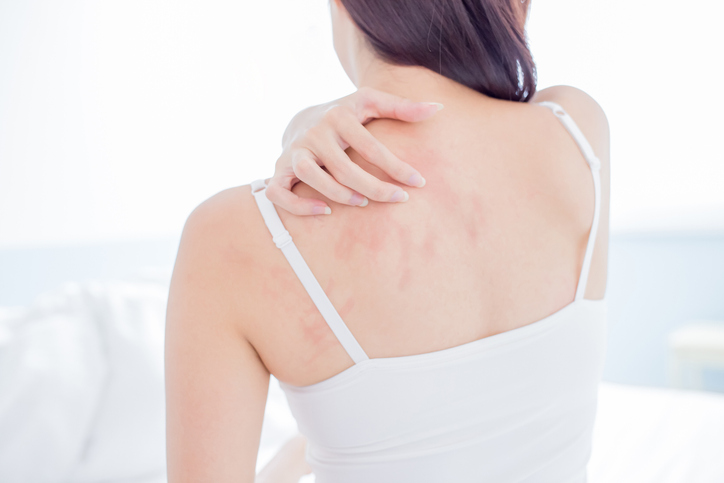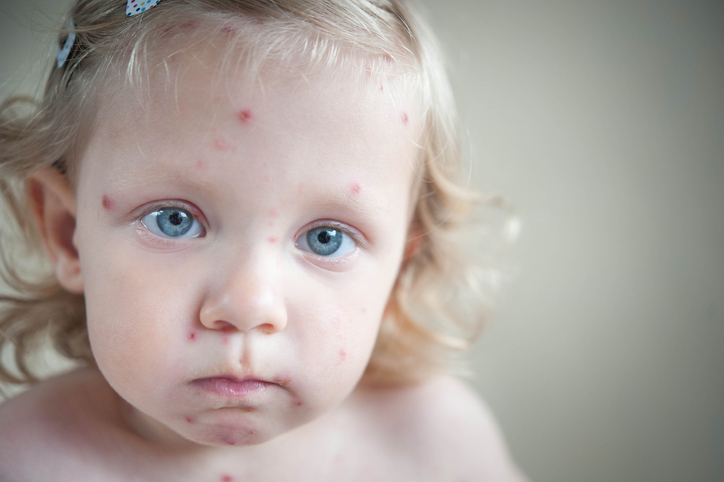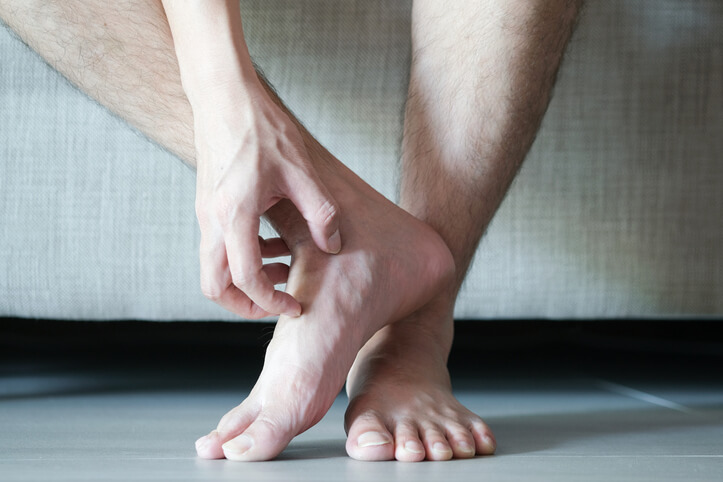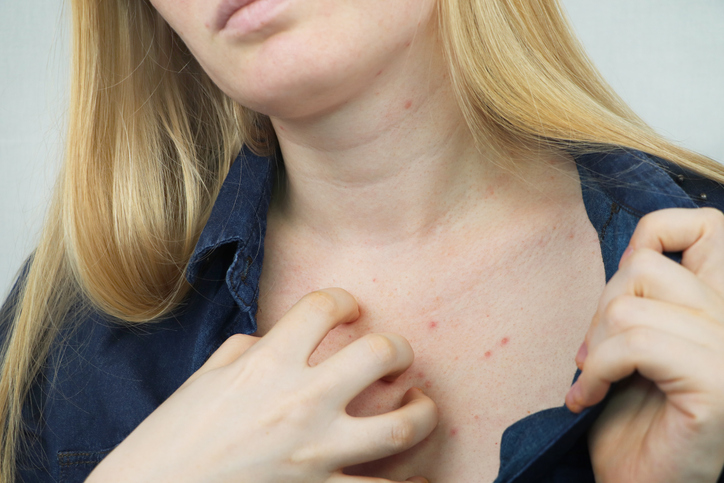Skin Infections
Skin infections can range from a mild inconvenience to a potentially life-threatening condition. Desert Valley Dermatology offers state-of-the-art dermatologic care for a comprehensive series of common skin infections.
Most changes to the skin are not necessarily due to serious medical conditions. However, skin infections might be a cause for concern. Skin infections can be uncomfortable, unsightly, dangerous, and sometimes highly contagious.
Though the skin is an effective barrier against potentially harmful environmental pathogens, sometimes microbes can enter the body through hair follicles or tiny breaks or cuts. The resulting infection can be bacterial, viral, fungal, or parasitic. These infections can cause numerous unpleasant symptoms, including skin inflammation, blistering, irritation, and discoloration.
At Desert Valley Dermatology, we offer a comprehensive series of treatments for common skin infections that address the underlying disease and its accompanying symptoms.

Bacterial Skin Infections
Many bacterial infections are easily treated, but when left unaddressed, they can have serious medical consequences.
Most bacterial skin infections respond well to treatment, requiring only oral or topical antibiotics to resolve. The most common bacterial skin infections include the following:
Cellulitis
Cellulitis is a streptococcus or staphylococcus skin infection typically seen in the lower extremities (feet and legs). The symptoms include blistering, dimpled skin, inflammation, pain, and discoloration. People who have experienced recent surgery, injuries, or compromised immune systems have a higher risk of cellulitis than the general population.
Impetigo
Impetigo is an extremely contagious skin infection commonly seen in infants, though it can also affect adults. The most distinctive symptoms are yellowish crusts, often on the face and nose, that appear to have been applied to the skin. Other symptoms include red tender sores and sometimes large, painful blisters.
Boils
Boils, also called furuncles, are inflamed, extremely tender pus-filled bumps that most commonly appear on the face, neck, and sometimes the armpits and legs. They are caused by a Staphylococcus aureus bacterial infection and can be highly contagious. This type of bacteria is often present on the skin. However, when the skin barrier is damaged, either through injury or another skin condition, the bacteria can penetrate the skin and cause inflammation.
Carbuncles are multiple boils that form in clusters. Carbuncles are more medically serious than single boils because they present a significant risk of a potentially deadly infection if left untreated.

Viral Skin Infections
Viral skin infections might be introduced directly into the skin or be a response to an existing viral illness. While viral skin infections can be uncomfortable and sometimes persistent, most are not life-threatening. Nevertheless, most viral skin infections require medical intervention for effective long-term management.
Chickenpox
Chickenpox is an extremely infectious disease that causes fluid-filled, painful blisters all over the body. Additional symptoms include fever, malaise, nausea, headache, and fatigue. The condition is caused by the varicella-zoster virus, which becomes dormant after the symptoms resolve.
Approximately 18% of people who have had chickenpox will experience significant scarring if the blistering is severe.
Shingles (Herpes Zoster)
Shingles eruptions occur when the virus that causes chickenpox (varicella-zoster) reactivates. It is characterized by an outbreak of red blisters that circle either the right or left side of the torso. The blisters can also appear on the face or, dangerously, near an eye.
It is not possible to spread shingles to another person. However, a person who has never had chickenpox or the vaccine can be infected with chickenpox by a person with active shingles.
Molluscum Contagiosum
Molluscum contagiosum is an infection that spreads from skin-to-skin contact or through contact with objects handled by someone with the virus. This condition is characterized by firm and smooth sores appearing anywhere on the body. They can become aggravated, swollen, tender, and itchy.
Warts
Warts are an infection that can spread from skin-to-skin contact or through contact with an object handled by someone with the condition. Warts aren’t typically painful, though if a wart forms on the foot (plantar wart), it can be uncomfortable to wear shoes, particularly if the wart is severe.
Warts are typically flesh-colored, though they can be gray, brown, or black. They might be smooth and round or rough-textured and irregular.
Hand, Foot, & Mouth Disease
Hand, foot, and mouth disease is caused by nonpolio enteroviruses transmitted through the mouth. It is typically experienced by small children, usually under five years old. However, adults can become infected, and while it is typically not serious, in rare cases, it can lead to significant complications.
Symptoms include painful blisters and lesions inside the mouth, and a non-painful rash on the palms, soles of the feet, and sometimes the legs.

Fungal Skin Infections
Approximately 40 species of fungi can live on the skin at any one time. While the overwhelming majority will not cause disease, an infection might occur when the skin is broken, or the immune response is lowered.
Fungal skin infections aren’t usually dangerous, though some can cause significant discomfort. They are highly transmissible, but can typically be treated through topical creams or oral medications.
Athlete's Foot
Athlete’s foot is a highly transmissible skin infection that causes a red, itchy, scaly rash between the toes that spreads to the entire foot. The condition is related to fungal infections, such as jock itch, and is generally treatable using topical antifungal medications.
Yeast Infection
Yeast infections can occur on the skin, on the genitals, in the mouth, or in the nail beds. Yeast skin infections are characterized by a painful red rash and patches of inflamed skin that weep clear fluid.
Ringworm
Ringworm is a raised, itchy, red, circular rash surrounding a clear skin patch. It can appear on the body, feet, or scalp area. The condition can be spread by direct contact with an infected person or by touching an infected person’s clothing or towel.
Nail Fungus
Nail fungus is a common condition that causes discolored, thickened, and brittle nails. While nail fungus can appear on fingernails, it is more often found on toenails. The condition can be treated effectively with oral antifungal medication or topical medicated creams, depending upon the severity of the infection.
Oral Thrush
Oral thrush is the overgrowth of the Candida albicans fungus in the mouth. It causes thick, white lesions on the inner cheeks, tonsils, tongue, and roof of the mouth. It is more common in infants, older adults, and people with compromised immunity.
Diaper Rash
Diaper rash is a form of dermatitis that often appears underneath a diaper where the skin undergoes persistent friction and the environment is warm and moist. It is a type of yeast infection that causes sores and inflamed, itchy skin on the thighs, buttocks, and genital region.

Parasitic Skin Infections
Did you know that the human body is host to a least two species of microscopic mites? While the idea might be less-than-pleasant to most of us, these mites might help keep skin healthy by consuming dead skin cells and sebum. However, not every parasite is particularly friendly.
Parasitic skin infections occur when tiny insects or worms burrow within the outer layer of the skin. The skin becomes irritated and inflamed, leading to discomfort and occasionally significant medical complications when left untreated.
Lice
Lice (Pediculus humanus capitis) are small, flightless insects that infest body and scalp hair. They are primarily spread through person-to-person contact but can be spread through contact with an infested person’s clothing, hats, hairbrushes, or towels. Lice feed on human blood and cause small, extremely itchy bites that can weep when scratched.
Bedbugs
Bedbugs are another species of flightless insect that feed on human blood. However, unlike lice, bedbugs are typically transferred from mattresses, bedding, and clothing rather than from person-to-person contact. Although some people do not react to bites from bedbugs, common symptoms include clusters of small, reddish welts on the face, neck, hands, and arms.
Scabies
Scabies is an extremely contagious condition caused by the Sarcoptes scabiei, sometimes called an itch mite. This parasite is a microscopic mite that largely burrows in skin folds between the fingers and in the elbows, though the mites can attack any part of the body. Scabies is characterized by intensely itchy clusters of small red bumps that can resemble pimples, though some people develop thick, scab-like patches.
Desert Valley Dermatology offers the expertise of extensively trained, board-certified dermatologists with in-depth expertise in diagnosing and treating complex skin conditions.
To schedule a consultation with the Desert Valley Dermatology team, please contact our helpful representatives today.
